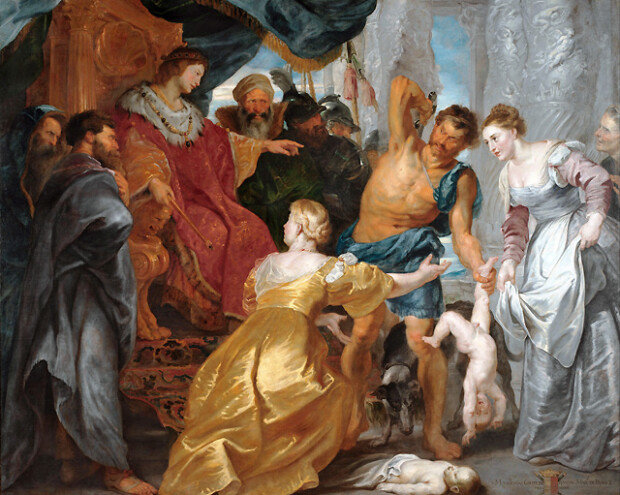The Wisdom of Solomon
The Wisdom of Solomon
Posted September. 05, 2019 07:31,
Updated September. 05, 2019 07:31

King Solomon in the Bible is called “the king of wisdom,” and his determination and wise reign made Israel prosper. The judgement of Solomon epitomized his wisdom in a case that two mothers gave birth to babies at the same time in the same house. When one of the babies had died, each claimed the remaining baby as her own. King Solomon ordered to cut the baby in half and it revealed which woman was the true mother.
The story was popular among painters. Peter Paul Rubens, the most influential artist of Flemish Baroque tradition in the 17th century, painted the story on a canvas. The intense brush work, showy colors, and theatrical composition are the features of the Baroque tradition. The painting depicts the very moment, when King Solomon orders to cut the baby in half to find who the real mother is. The soldier in the painting looks like he is going to cut the baby in half immediately. He is holding the baby head down by grabbing the baby’s ankles with his left hand. Terrified by the ruling, the woman in yellow dress is begging to give the baby to the other woman. But the other woman in white dress is not contesting the ruling. Who would be the real mother? The real mother lied in front of the king just to save her baby, knowing that she could lose her life. To be sure, the king could have been accused of blackmailing or child abuse in a modern court. But the message of the painting is clear: A great love that makes one to risk his/her own life to protect something that is precious to them and the importance of determination and insight a leader should have that can tell lies from the truth.
Aristotle once said, “Knowing yourself is the beginning of all wisdom.” Upon succeeding to the throne, King Solomon asked God for wisdom. Knowing his shortcomings and trying hard to improve them might have been the wisest judgment King Solomon made. Whether it be a personal affair or a state affair, it requires wisdom rather than knowledge, money, or power to overcome a crisis.







